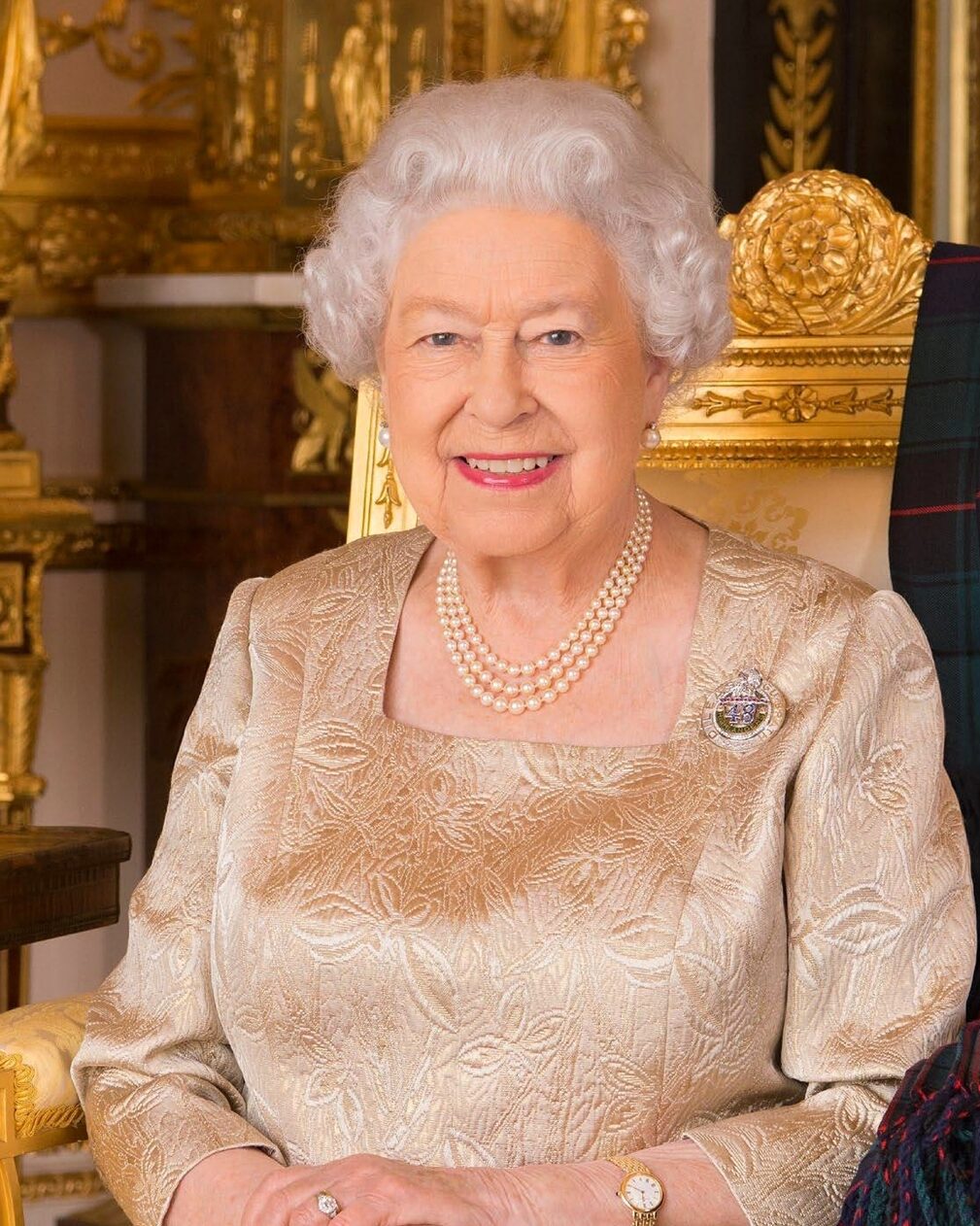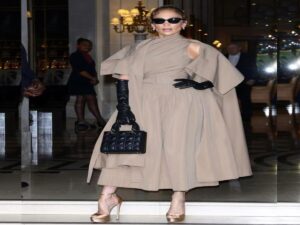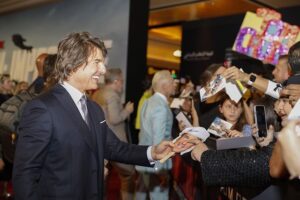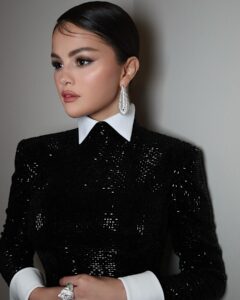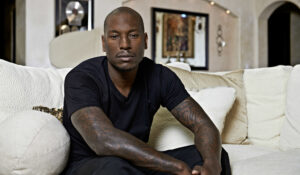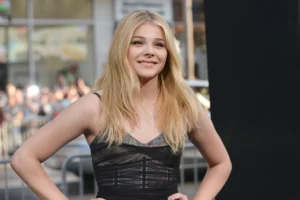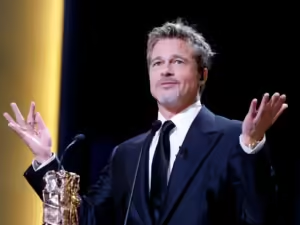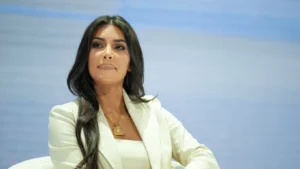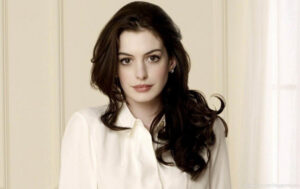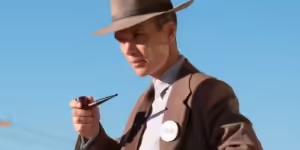
Royal tiaras are more than just exquisite pieces of jewelry; they are symbols of heritage, status, and tradition within the British royal family.
The art of tiara-lending, particularly under Queen Elizabeth II, was steeped in rules and significance, making it a fascinating aspect of royal life.
This blog post explores the history and importance of these sparkling headpieces, the protocols surrounding their use, and notable instances of tiara lending among the royals.
The Significance of Tiaras in Royal Culture
Tiaras have long been associated with royalty and nobility.
They signify not only wealth but also a connection to the lineage and traditions of the monarchy.
A Symbol of Heritage
Historically, tiaras were worn by women of royal blood during significant events, such as weddings and state functions.
They represent the continuity of royal traditions and the passing down of family heirlooms.
The Rules of Tiara-Wearing
In Queen Elizabeth II’s court, the rules governing who could wear which tiara were strict.
Generally, only close family members were permitted to wear these pieces, and they were often loaned out for special occasions.
This practice ensured that each tiara was worn with the respect and significance it deserved.
Notable Instances of Tiara Lending
Queen Elizabeth II’s reign saw many memorable moments involving tiaras.
Several royal family members wore these stunning pieces during significant life events, showcasing the blend of tradition and modernity within the monarchy.
Queen Camilla
In 2023, Queen Camilla was crowned alongside her husband, King Charles III. The following year, she wore Queen Elizabeth’s beautiful aquamarine tiara at a diplomatic reception at Buckingham Palace.
This event highlighted the continuity of royal traditions, even as new reigns began.
Princess Beatrice
Princess Beatrice made headlines when she wore the historic Queen Mary Diamond Fringe tiara on her wedding day in 2020.
This tiara has a rich history, originally designed for Queen Mary in 1919 and made from a necklace gifted by Queen Victoria.
It was also worn by Queen Elizabeth when she married Prince Philip in 1947, making it a treasured family heirloom.
Princess Eugenie
Instead of the York Tiara, which was gifted to Sarah Ferguson for her wedding to Prince Andrew, Princess Eugenie chose to wear the Greville Emerald Kokoshnik tiara.
This stunning piece was made by Boucheron for socialite Margaret Greville and passed through generations, ultimately becoming a part of Queen Elizabeth’s collection.
Meghan Markle
Meghan Markle wore the Queen Mary Diamond Bandeau Tiara on her wedding day to Prince Harry in 2018.
This art deco-style tiara was originally a wedding gift to Queen Mary in 1893 and later passed to Queen Elizabeth in 1953.
Interestingly, it had not been worn since it was given to the Queen, making Meghan’s choice particularly special.
Kate Middleton
Kate Middleton‘s wedding to Prince William in 2011 featured the stunning platinum Halo Tiara, also known as the Scroll Tiara. This piece was a gift to Queen Elizabeth for her 18th birthday, though she was rarely photographed wearing it.
By the time Kate wore it, it was a symbol of modern royal elegance.
The Cambridge Lovers’ Knot Tiara
Queen Elizabeth frequently wore the Cambridge Lovers’ Knot tiara throughout her reign. Since 2015, she has regularly lent it to Kate Middleton, who has worn it at various events.
This tiara also has a connection to the late Princess Diana, adding to its emotional significance within the royal family.
The Future of Tiara Lending
With the passing of Queen Elizabeth II in September 2022, the tiara-lending tradition continues under King Charles III.
As the new monarch, he inherits not only the throne but also the royal jewels, including the cherished tiaras that have adorned generations of royals.
What Will Happen Next?
As the royal family evolves, it will be interesting to see how the tradition of tiara lending adapts.
Will new pieces be introduced? Will the younger generation of royals continue to honor the past by wearing these historical treasures?
How Do Royal Family Members Decide Which Tiara to Wear for Special Occasions?
The British royal family is known for its rich history and traditions, and tiaras are among the most fascinating symbols of royalty.
These stunning pieces of jewelry have a significant cultural and ceremonial meaning, and their selection for special occasions involves careful consideration.
In this blog post, we will explore how royal family members decide which tiara to wear, the factors that influence their choices, and some notable moments in tiara history.
The Significance of Tiaras in Royalty
Tiaras are not just beautiful accessories; they represent heritage, status, and royal lineage.
History and Heritage
Tiaras have long been part of royal attire, often worn during important ceremonies and events.
Historically, they symbolized marriage and nobility.
Many tiaras are family heirlooms, passed down through generations, which adds to their significance.
Symbolism and Meaning
Different tiaras carry various meanings and associations, making the choice of which one to wear a thoughtful decision.
A tiara may represent a particular family member, historical event, or national pride.
For example, wearing a tiara once owned by a beloved queen could evoke nostalgia and connection to the past.
Factors Influencing Tiara Selection
When royal family members decide which tiara to wear, several factors influence their choice.
The Occasion
The nature of the event plays a critical role in determining which tiara is chosen.
For instance, formal events such as state dinners, formal receptions, and royal weddings often require the most elaborate and grand tiaras.
On the other hand, less formal events may call for simpler designs.
Family Traditions and Protocols
Royal family traditions and protocols also guide tiara selection. Each tiara may have specific rules regarding who can wear it and when.
For instance, some tiaras are traditionally loaned to new brides or worn during significant anniversaries.
The context of the occasion might dictate adherence to these customs, ensuring respect for historical practices.
Personal Preference
Individual taste also plays an important part in the decision-making process. Royal family members, like anyone else, have personal styles they prefer.
Some may favor intricate designs with precious gems, while others might choose minimalist styles.
This personal touch allows them to express their personality while adhering to royal standards.
Notable Instances of Tiara Choices
Throughout history, there have been memorable moments when royal family members selected particular tiaras for significant events.
Queen Elizabeth II
Queen Elizabeth II was known for her extensive tiara collection and often wore different pieces throughout her reign.
Her choices reflected both personal preference and historical significance.
For example, she famously wore the Cambridge Lovers’ Knot tiara for state events, a piece beloved by her mother and by Princess Diana.
Meghan Markle
Meghan Markle made headlines when she chose the Queen Mary Diamond Bandeau Tiara for her wedding to Prince Harry in 2018.
This piece was significant as it symbolized continuity, being passed down from Queen Mary to Queen Elizabeth II.
Markle’s choice of tiara highlighted the modern interpretation of royal traditions while embracing historic ties.
Kate Middleton
Kate Middleton’s wedding to Prince William showcased the Cartier Halo Tiara, a gift to Queen Elizabeth on her 18th birthday.
Wearing this tiara represented the continuation of family traditions and brought together elements of past and present.
Since then, Kate has worn a variety of tiaras, allowing her to express her unique style within royal standards.
The Future of Tiara Selection
As the monarchy evolves, the way tiaras are selected for special occasions will continue to change.
With the new generation of royals, we may see fresh perspectives on how these cherished pieces are worn and valued.
Will Tiaras Play A Role in Future Ceremonies?
As younger members of the royal family grow into their roles, the selection of tiaras may reflect a blend of tradition and modernity.
New interpretations of classic tiaras can symbolize the changing nature of royal events and public engagement.
The Most Famous Tiaras in the British Royal Collection
The British royal family is renowned for its rich history, opulence, and, of course, its stunning tiaras.
These exquisite pieces of jewelry are more than mere adornments; they symbolize power, prestige, and heritage.
In this blog post, we’ll explore some of the most famous tiaras in the British royal collection.
A Deep Dive into Royal Tiaras
Tiaras have long been associated with royalty, often worn during significant events such as weddings, state banquets, and formal receptions.
They are crafted from precious metals and adorned with various gemstones, showcasing the wealth and artistic talent of their era.
Let’s look at some of the most famous tiaras and their remarkable histories.
The Cambridge Lovers’ Knot Tiara
One of the most iconic tiaras in the collection is the Cambridge Lovers’ Knot Tiara.
Originally made for Queen Mary in 1914, this stunning piece features a design of alternating lovers’ knots and a series of pearl drops.
After Queen Mary, the tiara was passed down to Queen Elizabeth II, who frequently wore it throughout her reign.
It has also been worn by Kate Middleton, making it a modern favorite, symbolizing continuity and tradition within the royal family.
The Queen Mary Diamond Bandeau Tiara
Another notable piece is the Queen Mary Diamond Bandeau Tiara. Crafted in 1922, this elegant tiara was originally a wedding gift from Queen Mary to her, and it features a stunning art deco design.
Its versatility allows it to be worn in various ways, and it gained fame when Meghan Markle chose to wear it on her wedding day to Prince Harry in 2018.
The beautiful tiara’s delicate design, adorned with diamond floral motifs, makes it an exquisite piece that continues to capture the public’s imagination.
The Greville Emerald Kokoshnik Tiara
The Greville Emerald Kokoshnik Tiara is another gem in the British royal collection. Created by Boucheron in the 1920s, this striking tiara features a stunning array of emeralds and diamonds set in platinum.
It was made for socialite Margaret Greville, who bequeathed it to Queen Elizabeth, The Queen Mother.
Queen Elizabeth II inherited this magnificent piece, and it has been worn by several royal family members, showcasing its timeless beauty and elegance.
The Fringe Tiara
The historic Fringe Tiara is a captivating piece that dates back to 1919. Originally created for Queen Mary, it was designed from a necklace gifted by Queen Victoria.
This unique tiara is known for its spiky design and shimmering diamonds that create the appearance of a radiant crown.
It gained attention when Princess Beatrice wore it on her wedding day to Edoardo Mapelli Mozzi in 2020, renewing interest in this classic design.
The Strathmore Rose Tiara
The Strathmore Rose Tiara is another extraordinary piece in the royal collection, woven with history and tradition.
Created in the early 20th century, this tiara features intricate rose motifs and is crafted from a combination of diamonds and silver.
It was originally a wedding gift to the Queen Mother from her parents.
In recent years, it has been worn by Princess Eugenie, keeping its story alive in the royal family.
The Diamond Aquamarine Tiara
The Diamond Aquamarine Tiara, a stunning creation, was made for Queen Elizabeth II.
It features a beautiful arrangement of aquamarines framed by diamonds, resulting in an eye-catching and elegant design.
Queen Elizabeth originally received the aquamarine brooch from her husband, Prince Philip.
This tiara showcases not only exquisite craftsmanship but also personal sentiment, making it a remarkable piece within the royal collection.
The Diamond Aquamarine Tiara
The Diamond Aquamarine Tiara, a stunning creation, was made for Queen Elizabeth II.
It features a beautiful arrangement of aquamarines framed by diamonds, resulting in an eye-catching and elegant design.
Queen Elizabeth originally received the aquamarine brooch from her husband, Prince Philip.
This tiara showcases not only exquisite craftsmanship but also personal sentiment, making it a remarkable piece within the royal collection.
The Vladimir Tiara
The Vladimir Tiara is a masterpiece with a history that traces back to the Russian imperial family.
Originally owned by Grand Duchess Maria Pavlovna, this stunning tiara was passed on to Queen Mary.
It features a unique design with cabochon-shaped diamonds and a series of large pearls that add to its elegance.
Queen Elizabeth II wore this tiara on various occasions, displaying its royal heritage and timeless beauty.
The Role of Tiaras in Modern Royal Events
Tiaras continue to play a significant role in royal ceremonies today, symbolizing tradition, status, and beauty.
Current members of the royal family often choose tiaras for significant occasions, such as weddings and official state events.
How Tiaras Influence Royal Image
The choice of tiara can greatly influence the public’s perception of royal family members.
For example, wearing a particular tiara can evoke historical ties and connections, enhancing the narrative of continuity within the monarchy.
This aspect of tiara selection is particularly important for younger royals, who may seek to balance tradition with modernity.
How Do Tiaras Symbolize the Status and Lineage of the Royal Family?
Tiaras are more than just beautiful pieces of jewelry; they are rich symbols of status, lineage, and tradition within the royal family.
These stunning headpieces have been worn for centuries, representing the power and heritage of those who wear them.
In this blog post, we’ll explore how tiaras embody the status and lineage of the royal family, illuminating their significance in royal culture.
The Historical Significance of Tiaras
To understand the role of tiaras in symbolizing royal status, we must first look at their history and purpose.
Tiaras have long been associated with nobility and grandeur, often worn during special occasions and ceremonies.
The Evolution of Tiaras
Originally, only those of high status wore tiaras, as they represented wealth and power.
By the 18th and 19th centuries, tiaras became a staple in royal attire, often intricately designed to reflect individual tastes and familial heritage.
As royalty expanded into other European nations, the popularity of tiaras grew, leading to creative designs and unique family pieces that would come to symbolize lineage and prestige.
Tiaras as Symbols of Status
Tiaras are deeply entwined with the concept of status within the royal family, serving as a visual representation of a royal’s rank and position.
The Design and Craftsmanship
The craftsmanship involved in creating a tiara often reflects the wealth of the royal family.
Fabulous designs composed of precious metals and jewels signify not only monetary value but also artistic talent and lineage.
A tiara made from diamonds and emeralds, for example, suggests a higher standing than one made from less expensive materials.
These elaborate pieces often become masterpiece displays of what royal heritage signifies.
Public Appearances and Ceremonies
Royal family members often wear tiaras during significant public appearances, such as state dinners, weddings, and coronations.
The act of wearing a tiara at these events serves to reinforce their regal status.
For instance, when Queen Elizabeth II wore the Cambridge Lovers’ Knot tiara, it sent a clear message of heritage and continuity within the monarchy.
Each appearance enhances the tiara’s public image and intertwines it with the royal family’s legacy.
Tiaras as Symbols of Lineage
Beyond showcasing wealth, tiaras serve as powerful symbols of lineage within the royal family.
Family Heirlooms
Many tiaras in the royal collection are family heirlooms passed down through generations.
For instance, the Queen Mary Diamond Bandeau Tiara was handed down from Queen Mary to Queen Elizabeth II, carrying with it a rich history.
These heirloom tiaras connect contemporary royals to their predecessors, emphasizing the idea of lineage and continuity.
Wearing such pieces during special occasions not only honors past generations but also solidifies their presence in royal history.
Creating Connections
Tiaras also connect individuals to the broader narrative of the royal family.
For instance, Princess Eugenie chose to wear the Strathmore Rose tiara at her wedding, linking herself to her family’s history while also embracing her unique identity within the royal family.
This blending of personal and familial history shows how tiaras symbolize a finer connection to lineage, tradition, and the stories of royal family members.
The Emotional and Cultural Significance
Tiaras hold a profound emotional and cultural significance in royal culture; they embody personal stories and memories alongside their historical value.
Emotional Connections
Individuals often have their own emotional connections with specific tiaras.
For many royal family members, wearing a family heirloom tiara can evoke feelings of pride and nostalgia.
The act of wearing these pieces creates a sense of belonging and continuity within the family lineage, reinforcing identity across generations.
Cultural Heritage
Tiaras also represent the cultural heritage of a country.
Through their designs, which often reflect national symbols or artistic movements, tiaras serve as cultural artifacts that tell stories of a nation’s history.
For example, tiaras that incorporate local gemstones highlight the country’s resources and aesthetics.
The Future Role of Tiaras
As the royal family continues to evolve, tiaras will undoubtedly continue to symbolize status and lineage.
Younger royals, like Meghan Markle and Kate Middleton, are reinterpreting how tiaras are worn and viewed, ensuring that these pieces remain relevant in modern society.
